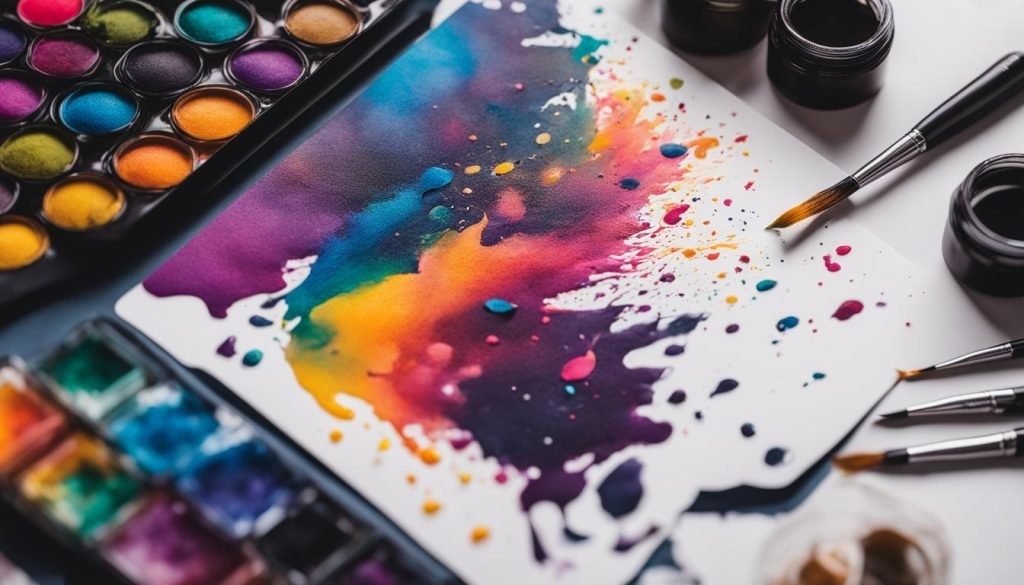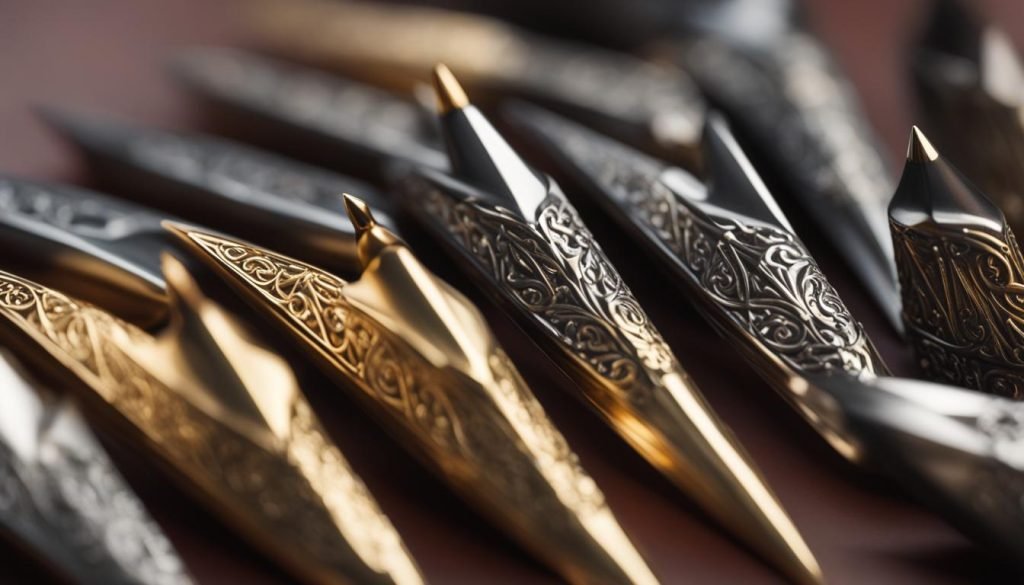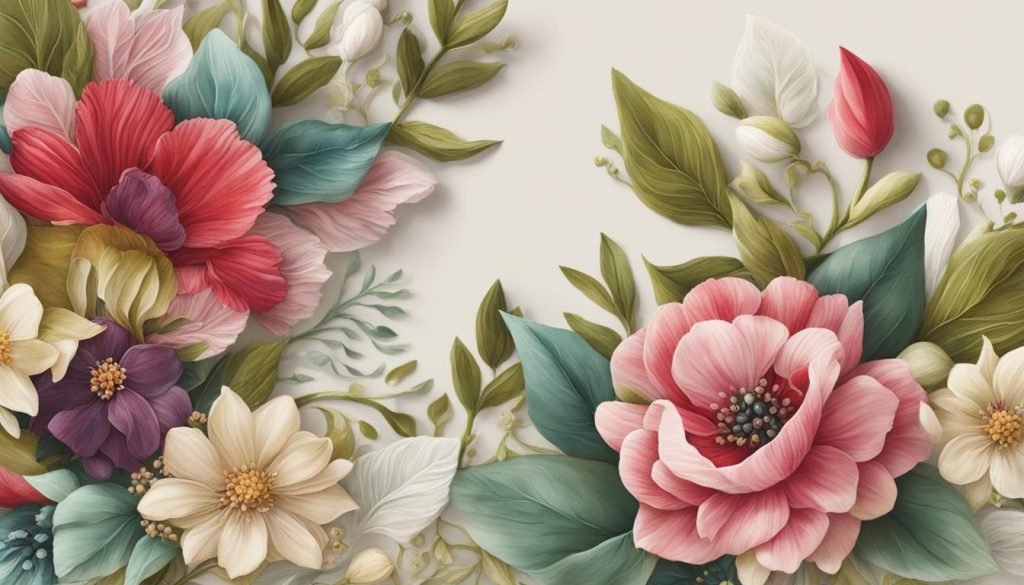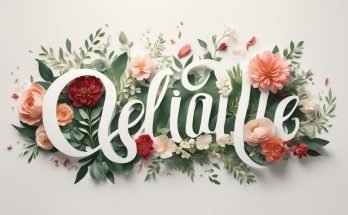Handmade Calligraphy Cards: Discover the Ultimate Personal Touch for Your Special Occasions!
Looking for a special way to express your feelings for a loved one on a special occasion? Look no further than handmade calligraphy cards. These unique and personalized cards are crafted with care, using a dip pen and ink, to create a one-of-a-kind piece that will be treasured for years to come.
Each handmade calligraphy card is made with high-quality paper sourced locally, ensuring its durability and longevity. With a wide range of ink and envelope colors to choose from, you can customize your card to perfectly match the occasion and the recipient’s personal style.
Whether it’s a birthday, anniversary, wedding, or any other special moment, a handmade calligraphy card adds a personal touch that will make the recipient feel truly special. So unleash your creativity and create a card that will be cherished forever.
Key Takeaways:
- Handmade calligraphy cards offer a unique and personal way to express your feelings for any occasion.
- Each card is carefully handcrafted using a dip pen and ink, creating a one-of-a-kind piece.
- High-quality paper and a range of ink and envelope colors ensure a card that will be treasured for years to come.
- Handmade calligraphy cards add a personal touch that will make the recipient feel truly special.
- Unleash your creativity and start creating your own personalized cards today.
Cardstock for Calligraphy
Choosing the Right Cardstock for Your Handmade Calligraphy Cards
When creating handmade calligraphy cards, the choice of cardstock plays a crucial role in achieving the desired effect. The cardstock you choose should provide a sturdy surface for the calligraphy ink, ensuring that the writing looks crisp and beautiful. Additionally, the cardstock should complement the overall design of your cards.
Opt for a high-quality cardstock that is smooth or textured, depending on your preference. Smooth cardstock offers a clean and sleek look, allowing the calligraphy to stand out prominently. On the other hand, textured cardstock adds a unique tactile element to your cards, bringing depth and interest to the overall design.
Consider the weight of the cardstock as well. A heavier cardstock not only feels more substantial but also adds a sense of luxury to your cards. It is important to strike a balance between weight and flexibility, ensuring that the cardstock is thick enough to hold the calligraphy ink without being too rigid for folding and handling.
A Comparison of Different Cardstock Options
| Cardstock Type | Features | Best For |
|---|---|---|
| Smooth Cardstock | – Clean and sleek surface – Enhances calligraphy legibility – Suitable for various card designs |
– Modern and minimalist designs – Bold and vibrant calligraphy |
| Textured Cardstock | – Adds a tactile element – Creates depth and interest – Provides a unique look and feel |
– Vintage and rustic designs – Romantic and whimsical calligraphy |
| Heavyweight Cardstock | – Feels substantial and luxurious – Enhances durability and longevity – Provides a premium look and feel |
– Special occasions – Elegant and formal calligraphy |
Experiment with different cardstock options to find the one that best suits your personal style and the occasion you are creating the card for. Remember, the right cardstock choice can elevate your handmade calligraphy cards, making them truly special and memorable.
Watercolor Paper Cards

For a truly unique and artistic touch, consider using watercolor paper for your handmade calligraphy cards. Watercolor paper offers a textured surface that adds depth and interest to your cards. It creates a beautiful foundation for your calligraphy, allowing the ink to smoothly flow and blend with the paper.
With watercolor paper cards, you have the opportunity to experiment with different painting techniques. You can use a wet-on-wet technique to create soft and dreamy backgrounds, or employ dry brush strokes to add texture and detail. The versatility of watercolor paper allows you to create stunning designs that are truly one-of-a-kind.
Moreover, watercolor paper is known for its durability and longevity. It is designed to withstand the moisture of watercolors, ensuring your handmade calligraphy cards will last for years to come. When you use watercolor paper, you are not only creating a beautiful card, but also a cherished keepsake for your loved ones.
Table: Comparison of Watercolor Paper Types
| Watercolor Paper Type | Features | Best For |
|---|---|---|
| Cold Press | Textured surface, absorbs water well | Creating soft and dreamy backgrounds |
| Hot Press | Smooth surface, minimal texture | Writing crisp and detailed calligraphy |
| Rough | Rough surface, adds texture and depth | Creating expressive and textured designs |
When choosing watercolor paper for your cards, consider the type of surface that best suits your style and the effect you want to achieve. Cold press paper is great for soft and dreamy backgrounds, while hot press paper is perfect for crisp calligraphy. Rough paper adds texture and depth to your designs.
Calligraphy Ink Selections
When it comes to creating stunning handmade calligraphy cards, selecting the right calligraphy ink is essential. The choice of ink can greatly influence the overall look and feel of your cards. From colors to drying time, there are several factors to consider when making your selection.
Types of Calligraphy Ink
Calligraphy ink comes in various forms, each with its own unique properties. Some popular options include:
- Liquid ink: This type of ink is commonly used for calligraphy and comes in bottles or cartridges. It can be easily loaded into dip pens or fountain pens.
- Paste ink: Paste ink, also known as stick ink or ink cakes, requires water to be activated. It is often used in traditional Asian calligraphy.
Both liquid and paste inks offer a wide range of color options, allowing you to find the perfect shade for your cards.
Considerations for Choosing Calligraphy Ink
When selecting calligraphy ink for your handmade cards, keep the following factors in mind:
- Color options: Look for a brand or range of inks that offers a wide selection of colors. This will allow you to match the ink to the occasion or design theme of your card.
- Drying time: Consider the drying time of the ink, especially if you plan on layering colors or adding embellishments. Some inks dry quickly, while others may require more time to dry completely.
- Compatibility with cardstock: Ensure that the ink you choose is compatible with the type of cardstock you are using. Test the ink on a small piece of paper to ensure it adheres well and doesn’t bleed or feather.
By carefully considering these factors, you can select calligraphy ink that will enhance the beauty and impact of your handmade cards.
With the right calligraphy ink, you can bring your handmade calligraphy cards to life with stunning colors and beautiful lettering. Experiment with different inks to find the ones that suit your style and the occasion. Whether you prefer the elegance of liquid ink or the traditional charm of paste ink, the right selection will help you create truly memorable cards.
| Brand | Color Options | Drying Time | Compatibility with Cardstock |
|---|---|---|---|
| Pilot Parallel Pen Ink | Multiple colors available | Quick drying | Compatible with most cardstock |
| Kuretake Gansai Tambi Watercolors | Wide range of vibrant colors | Varies depending on application | Compatible with watercolor paper |
| Speedball India Ink | Black and other dark shades | Quick drying | Compatible with most cardstock |
Table: Examples of Calligraphy Ink Brands and their Features
Brush Pens for Card Making

When it comes to creating beautiful calligraphy on handmade cards, brush pens are an essential tool. They offer the perfect combination of a brush’s flexibility and a pen’s convenience, allowing you to achieve smooth and controlled strokes. Whether you’re a beginner or an experienced calligrapher, brush pens are versatile and easy to use, making them ideal for card making.
One of the advantages of brush pens is their wide range of colors and tip sizes. This variety allows you to experiment with different designs and create unique cards for any occasion. Whether you want to add delicate details or bold brush strokes, brush pens can help you achieve the desired effect.
Another benefit of using brush pens for card making is their portability. They are compact and easy to carry, making them perfect for crafting on the go. Whether you’re attending a workshop, traveling, or simply want to work in different locations, brush pens allow you to continue creating beautiful calligraphy wherever you are.
To get started with brush pens, simply choose the colors and tip sizes that suit your design. Practice different strokes and techniques to familiarize yourself with the pens’ flexibility. With time and practice, you’ll be able to create stunning calligraphy on your handmade cards, adding a personal and artistic touch to every design.
Calligraphy Nibs for Cards

When it comes to creating intricate and precise calligraphy on your handmade cards, the choice of nib plays a crucial role. Calligraphy nibs come in various sizes and styles, each offering a unique writing experience. Whether you prefer a fine, delicate nib for elegant designs or a broader nib for bold and expressive lettering, there is a nib that suits your personal style and card design.
Experimenting with different calligraphy nibs can lead to exciting discoveries and help you find the perfect tool to bring your card creations to life. Fine nibs are ideal for intricate details and delicate letterforms, while broader nibs offer a more expressive and dramatic effect. A flexible nib can provide a variation in line thickness, adding depth and character to your calligraphy.
Remember, the choice of nib goes hand in hand with the type of ink you use. Different nibs may require adjustments in ink consistency or flow to achieve the desired results. It’s always a good idea to try out different combinations of nibs and inks to find the perfect pairing that brings out the beauty of your calligraphy on cards.
Table: Comparison of Calligraphy Nibs for Cards
| Nib Type | Characteristics | Recommended Use |
|---|---|---|
| Fine Nib | Thin and precise lines | Intricate details, delicate lettering |
| Broad Nib | Bold and expressive lines | Dramatic lettering, emphasis |
| Flexible Nib | Variation in line thickness | Adding depth and character |
| Italic Nib | Slanted edge for calligraphic strokes | Classic calligraphy styles |
As you embark on your calligraphy journey, don’t be afraid to explore different nibs and techniques. Each nib offers its own unique qualities and can inspire new creative possibilities. With practice and experimentation, you’ll find the perfect calligraphy nibs that elevate your handmade cards to a whole new level of beauty and artistry.
Embellishments for Handmade Cards

Enhance the beauty and personal touch of your handmade calligraphy cards with exquisite embellishments. These decorative elements add charm and uniqueness to your creations, making them even more special. Whether you’re creating cards for birthdays, weddings, or any other occasion, embellishments can elevate your designs and leave a lasting impression on the recipient.
There are countless options for embellishing your handmade cards, allowing you to customize each one according to your vision. Consider incorporating ribbons, twine, or lace to add texture and elegance. These materials can be used to create bows, borders, or delicate accents that bring your cards to life.
Wax seals are another stunning embellishment that can add a touch of sophistication to your cards. These seals can feature intricate designs, monograms, or even personalized initials, creating a truly unique and memorable detail. They are perfect for sealing envelopes or adding a finishing touch to the front of your cards.
For a whimsical touch, consider using stickers or die-cut shapes. These can range from floral motifs and cute animals to celebratory symbols and heartfelt messages. Stickers and die-cuts allow you to easily incorporate intricate designs and colorful elements into your cards without the need for extensive drawing or painting.
Remember, the key to successful embellishment is balance. Take care not to overcrowd your design, but rather use embellishments strategically to enhance the overall composition. Experiment with different combinations and placements to create visually pleasing arrangements that highlight your calligraphy and evoke the desired mood for each occasion.
Envelope Calligraphy Techniques
When it comes to creating truly special handmade calligraphy cards, don’t forget about the envelope! Envelope calligraphy techniques add a touch of elegance and anticipation to your cards, setting the tone for what’s inside. With the right techniques and attention to detail, you can create stunning envelopes that will make your recipients feel truly special.
One popular technique is the classic centered calligraphy, where the recipient’s address is written in beautiful calligraphy in the center of the envelope. This technique creates a visually striking presentation and showcases your calligraphy skills. Make sure to use a ruler or pencil lines to guide your writing and ensure even spacing.
| Envelope Calligraphy Techniques | Description |
|---|---|
| Flourishing | Add decorative flourishes and swirls to your calligraphy for an extra touch of elegance. |
| Shadowing | Create depth and dimension by adding a subtle shadow effect to your calligraphy. |
| Embossing | Use embossing powder and heat to create raised, shiny calligraphy that adds a luxurious touch. |
Another technique to consider is flourishing, which involves adding decorative flourishes and swirls to your calligraphy. These embellishments can enhance the overall design of your envelopes and make them truly eye-catching. Experiment with different styles and shapes to find the ones that best complement your calligraphy.
Lastly, shadowing is an advanced technique that adds depth and dimension to your envelope calligraphy. By carefully adding a subtle shadow effect to your letters, you can create a three-dimensional appearance that makes your calligraphy stand out. Practice this technique with different ink colors to achieve the desired effect.
With these envelope calligraphy techniques, you can take your handmade calligraphy cards to the next level. Whether you choose to go with classic centered calligraphy, flourishing, or shadowing, each technique adds a unique touch and showcases your creativity and attention to detail. So grab your favorite calligraphy pen, envelope, and ink, and start exploring the world of envelope calligraphy today.
Calligraphy Layout Templates
Creating visually balanced and aesthetically pleasing calligraphy cards can be a challenging task, especially if you’re new to the art of calligraphy. That’s where calligraphy layout templates come in handy. These templates provide a guide for arranging your calligraphy and other design elements on the card, helping you achieve a harmonious and visually appealing composition.
Calligraphy layout templates offer a variety of pre-designed layouts and formats, which you can use as a starting point for your card designs. They provide guidelines for the placement of headings, body text, and decorative elements, ensuring that your calligraphy is neatly aligned and spaced.
Whether you’re creating a birthday card, wedding invitation, or thank-you note, calligraphy layout templates can save you time and effort by eliminating the need to start from scratch. They allow you to focus on the creative aspect of your card design, while still ensuring a professional and polished result.
Benefits of Using Calligraphy Layout Templates
Using calligraphy layout templates offers several advantages:
- Consistency: Calligraphy layout templates ensure consistency in your card designs, making it easier to create a cohesive collection or series.
- Time-saving: Instead of spending hours on layout design, you can start with a template and customize it to suit your needs, saving you valuable time.
- Professional look: Calligraphy layout templates are designed by professionals who understand the principles of design and composition, giving your cards a polished and professional look.
- Design inspiration: Even if you’re an experienced calligrapher, calligraphy layout templates can provide inspiration and new ideas for your card designs.
So, whether you’re a beginner or an experienced calligrapher, consider incorporating calligraphy layout templates into your card-making process. They can help you create visually stunning and well-organized designs that will impress and delight the recipients of your handmade calligraphy cards.
Greeting Card Calligraphy Scripts
When it comes to creating beautiful greeting cards with calligraphy, the choice of script can greatly impact the overall look and feel. Different calligraphy scripts evoke different moods and styles, allowing you to customize your cards to suit the occasion and recipient. Here are a few popular calligraphy scripts that you can consider using:
1. Copperplate:
Copperplate is a classic script known for its elegant and sophisticated appearance. It features graceful letterforms with thin upstrokes and thick downstrokes, giving it a refined and timeless look. Copperplate is often used for formal occasions such as weddings or anniversary cards.
2. Spencerian:
Spencerian is another script that exudes elegance and beauty. It originated in the 19th century and is characterized by its flowing lines and delicate flourishes. Spencerian scripts are often used for creating romantic or sentimental greeting cards.
3. Brush:
If you’re looking for a more modern and playful style, brush scripts are an excellent choice. With their bold and dynamic strokes, brush scripts add a contemporary touch to your cards. They are perfect for creating vibrant and upbeat designs for birthdays or celebrations.
Remember, the choice of script depends on the occasion, recipient, and personal preference. Feel free to experiment with different scripts and styles to create unique and memorable greeting cards that truly stand out.
Now that you have a better understanding of different calligraphy scripts for greeting cards, you can unleash your creativity and start designing personalized cards that will leave a lasting impression. Whether you opt for the elegance of Copperplate, the beauty of Spencerian, or the playfulness of brush scripts, your calligraphy will add a special touch to any occasion.
Metallic Inks for Cards
Add a touch of glamour and elegance to your handmade calligraphy cards with metallic inks. These special inks come in a range of stunning metallic shades, such as gold, silver, and copper, and can create a mesmerizing effect on the card. With their reflective properties, metallic inks add a luxurious and eye-catching element to your designs.
When using metallic inks on your cards, consider pairing them with dark-colored or textured cardstock to enhance the shimmering effect. The contrast between the rich tones of the ink and the background creates a captivating visual impact.
Additionally, metallic inks are versatile and can be used in various calligraphy styles, from elegant scripts to bold lettering. Experimenting with different nibs and stroke techniques will allow you to create unique and personalized designs that truly stand out. Whether you’re creating wedding invitations, holiday cards, or special occasion greetings, metallic inks will elevate your handmade calligraphy cards to a whole new level.
Table: Metallic Ink Comparison
| Ink Color | Finish | Recommended Cardstock | Calligraphy Style |
|---|---|---|---|
| Gold | Shimmering | Dark or textured | Elegant scripts, formal occasions |
| Silver | Metallic | Light or pastel | Modern and contemporary designs |
| Copper | Glistening | Neutral or earthy | Rustic themes, autumn-inspired cards |
With the use of metallic inks, your handmade calligraphy cards will exude a sense of elegance and sophistication. Impress your loved ones with these exquisite creations that are sure to be cherished and treasured.
Conclusion
Handmade Calligraphy Cards offer a personal touch that can make any occasion even more special. By creating these unique cards, you have the opportunity to express your feelings in a way that is truly meaningful. Whether you are celebrating a birthday, wedding, or any other momentous event, a handmade calligraphy card adds a heartfelt touch that will be cherished by the recipient.
With the right materials and techniques, you can create stunning cards that showcase your creativity and thoughtfulness. Each card is meticulously crafted using a dip pen and ink, resulting in a one-of-a-kind piece that reflects your personal style. The high-quality paper and locally sourced materials ensure that these cards will be treasured for years to come.
So why settle for generic store-bought cards, when you can create something truly special? Handmade Calligraphy Cards allow you to add a personal touch to every occasion, making the recipient feel truly valued and loved. Start unleashing your creativity today and see the joy that these cards bring to those who receive them.
FAQ
What occasions are suitable for handmade calligraphy cards?
Handmade calligraphy cards are suitable for any occasion, including birthdays, weddings, anniversaries, holidays, and more.
How are handmade calligraphy cards created?
Handmade calligraphy cards are carefully crafted using a dip pen and ink, creating a beautiful and unique piece.
What type of cardstock is recommended for calligraphy?
Opt for a high-quality cardstock that is smooth or textured, depending on your preference, to ensure crisp and beautiful calligraphy.
Can I use watercolor paper for handmade calligraphy cards?
Yes, watercolor paper adds a unique touch to handmade calligraphy cards, providing a textured surface and allowing for the use of watercolor techniques.
What should I consider when selecting calligraphy ink for my cards?
Consider factors such as color options, drying time, and compatibility with your chosen cardstock when selecting calligraphy ink.
What are brush pens and how can I use them for card making?
Brush pens are versatile tools that offer the flexibility of a brush and the convenience of a pen, allowing for smooth and controlled strokes in calligraphy.
What are calligraphy nibs and how do they enhance handmade cards?
Calligraphy nibs are essential for creating intricate and precise calligraphy on handmade cards, offering a unique writing experience.
How can I add embellishments to my handmade calligraphy cards?
Consider using elements such as ribbons, twine, or wax seals to enhance the overall design and add an extra touch of beauty to your cards.
How can I create envelope calligraphy for my handmade cards?
Envelope calligraphy techniques involve adding beautiful calligraphy to the outside of the envelope, setting the tone for what’s inside.
Can calligraphy layout templates help me design my cards?
Yes, calligraphy layout templates provide a guide for arranging your calligraphy and other design elements on the card, offering inspiration and balance.
What scripts can I use for greeting card calligraphy?
Scripts such as Copperplate or Spencerian add elegance and sophistication, while modern scripts like Brush or Gothic bring a contemporary touch to your cards.
How can metallic inks enhance my handmade calligraphy cards?
Metallic inks come in a range of shades and create a stunning and eye-catching effect, adding a touch of glamour and elegance to your cards.
What makes handmade calligraphy cards special?
Handmade calligraphy cards offer a personal and unique way to express your feelings for any occasion, adding a heartfelt touch that will make the recipient feel truly special.




